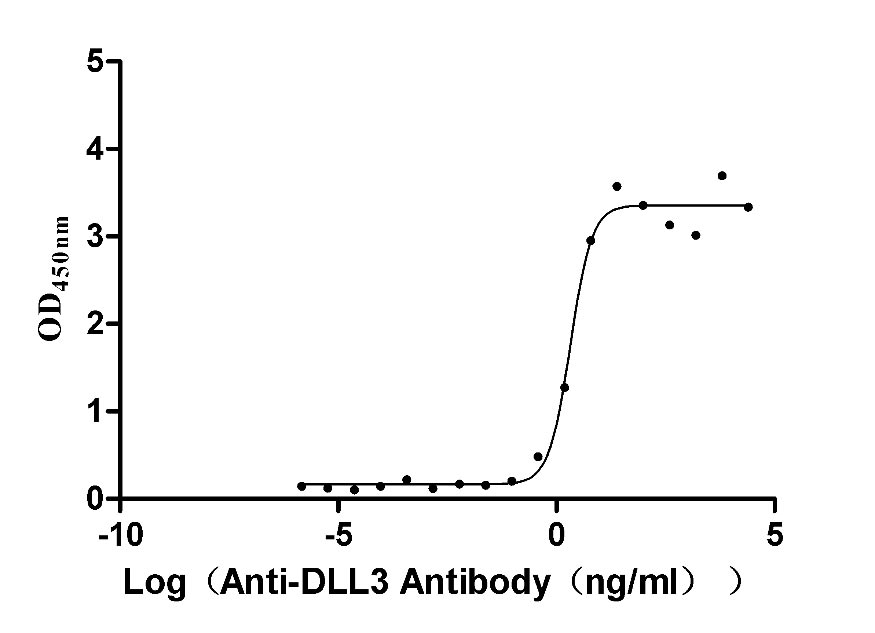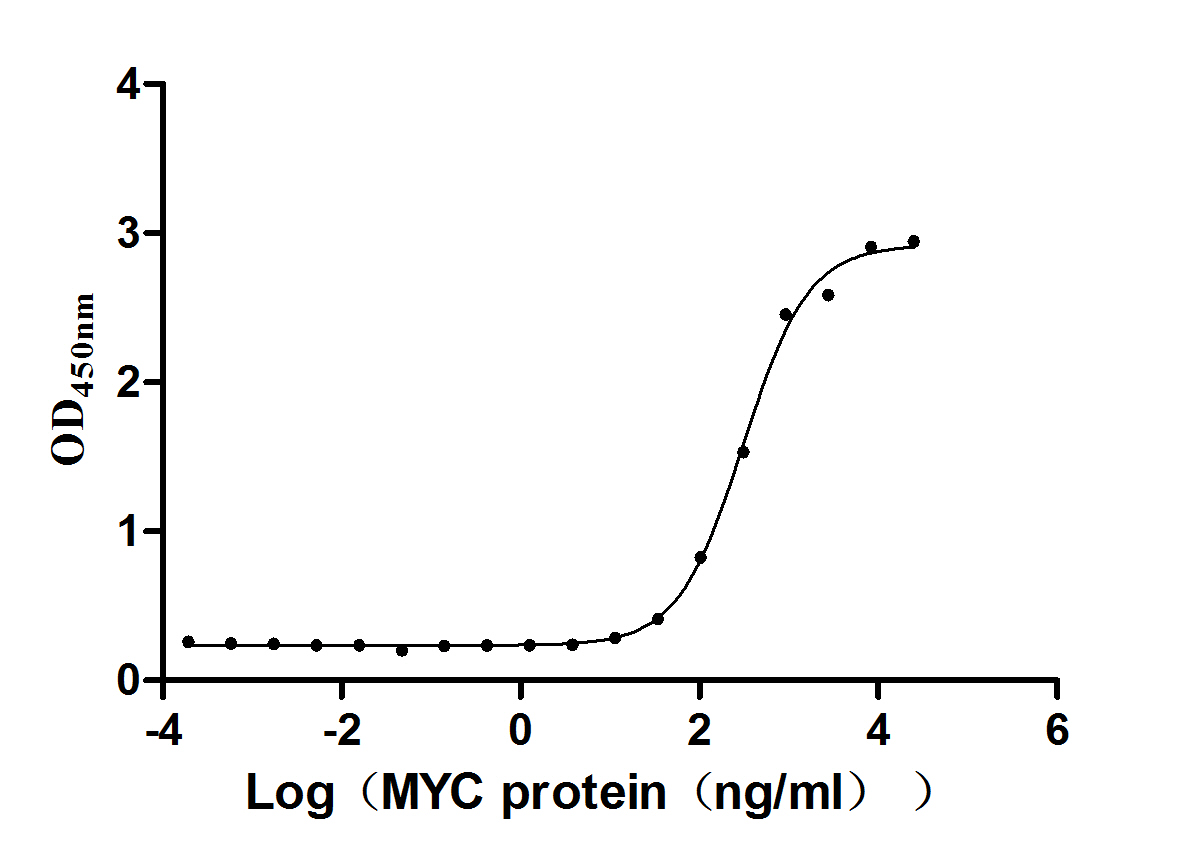Recombinant Human Phosphatidylinositol 5-phosphate 4-kinase type-2 beta (PIP4K2B)
-
中文名称:人PIP4K2B重组蛋白
-
货号:CSB-YP018023HU
-
规格:
-
来源:Yeast
-
其他:
-
中文名称:人PIP4K2B重组蛋白
-
货号:CSB-EP018023HU-B
-
规格:
-
来源:E.coli
-
共轭:Avi-tag Biotinylated
E. coli biotin ligase (BirA) is highly specific in covalently attaching biotin to the 15 amino acid AviTag peptide. This recombinant protein was biotinylated in vivo by AviTag-BirA technology, which method is BriA catalyzes amide linkage between the biotin and the specific lysine of the AviTag.
-
其他:
-
中文名称:人PIP4K2B重组蛋白
-
货号:CSB-BP018023HU
-
规格:
-
来源:Baculovirus
-
其他:
-
中文名称:人PIP4K2B重组蛋白
-
货号:CSB-MP018023HU
-
规格:
-
来源:Mammalian cell
-
其他:
产品详情
-
纯度:>85% (SDS-PAGE)
-
基因名:
-
Uniprot No.:
-
别名:PIP4K2B; PIP5K2B; Phosphatidylinositol 5-phosphate 4-kinase type-2 beta; EC 2.7.1.149; 1-phosphatidylinositol 5-phosphate 4-kinase 2-beta; Diphosphoinositide kinase 2-beta; Phosphatidylinositol 5-phosphate 4-kinase type II beta; PI(5)P 4-kinase type II beta; PIP4KII-beta; PtdIns(5)P-4-kinase isoform 2-beta
-
种属:Homo sapiens (Human)
-
蛋白长度:Full Length of Mature Protein
-
表达区域:2-416
-
氨基酸序列SSNCTSTTA VAVAPLSASK TKTKKKHFVC QKVKLFRASE PILSVLMWGV NHTINELSNV PVPVMLMPDD FKAYSKIKVD NHLFNKENLP SRFKFKEYCP MVFRNLRERF GIDDQDYQNS VTRSAPINSD SQGRCGTRFL TTYDRRFVIK TVSSEDVAEM HNILKKYHQF IVECHGNTLL PQFLGMYRLT VDGVETYMVV TRNVFSHRLT VHRKYDLKGS TVAREASDKE KAKDLPTFKD NDFLNEGQKL HVGEESKKNF LEKLKRDVEF LAQLKIMDYS LLVGIHDVDR AEQEEMEVEE RAEDEECEND GVGGNLLCSY GTPPDSPGNL LSFPRFFGPG EFDPSVDVYA MKSHESSPKK EVYFMAIIDI LTPYDTKKKA AHAAKTVKHG AGAEISTVNP EQYSKRFNEF MSNILT
-
蛋白标签:Tag type will be determined during the manufacturing process.
The tag type will be determined during production process. If you have specified tag type, please tell us and we will develop the specified tag preferentially. -
产品提供形式:Lyophilized powder
Note: We will preferentially ship the format that we have in stock, however, if you have any special requirement for the format, please remark your requirement when placing the order, we will prepare according to your demand. -
复溶:We recommend that this vial be briefly centrifuged prior to opening to bring the contents to the bottom. Please reconstitute protein in deionized sterile water to a concentration of 0.1-1.0 mg/mL.We recommend to add 5-50% of glycerol (final concentration) and aliquot for long-term storage at -20℃/-80℃. Our default final concentration of glycerol is 50%. Customers could use it as reference.
-
储存条件:Store at -20°C/-80°C upon receipt, aliquoting is necessary for mutiple use. Avoid repeated freeze-thaw cycles.
-
保质期:The shelf life is related to many factors, storage state, buffer ingredients, storage temperature and the stability of the protein itself.
Generally, the shelf life of liquid form is 6 months at -20°C/-80°C. The shelf life of lyophilized form is 12 months at -20°C/-80°C. -
货期:Delivery time may differ from different purchasing way or location, please kindly consult your local distributors for specific delivery time.Note: All of our proteins are default shipped with normal blue ice packs, if you request to ship with dry ice, please communicate with us in advance and extra fees will be charged.
-
注意事项:Repeated freezing and thawing is not recommended. Store working aliquots at 4°C for up to one week.
-
Datasheet :Please contact us to get it.
相关产品
靶点详情
-
功能:Participates in the biosynthesis of phosphatidylinositol 4,5-bisphosphate. Preferentially utilizes GTP, rather than ATP, for PI(5)P phosphorylation and its activity reflects changes in direct proportion to the physiological GTP concentration. Its GTP-sensing activity is critical for metabolic adaptation. PIP4Ks negatively regulate insulin signaling through a catalytic-independent mechanism. They interact with PIP5Ks and suppress PIP5K-mediated PtdIns(4,5)P2 synthesis and insulin-dependent conversion to PtdIns(3,4,5)P3.
-
基因功能参考文献:
- PIP4K2B couples the cellular GTP concentration to the levels of the stress-regulated phosphoinositide PtdIns5P, to impact on tumor cell growth. PMID: 27132569
- Suppression of PIP4K expression selectively prevents tumor cell growth in vitro and prevents tumor development in mice that have lost the tumor suppressor p53. (Review) PMID: 25728392
- Association between low PIP4K2B expression and poor patient survival.Analysis of gene expression datasets confirmed the association between low PIP4K2B and low CDH1expression. PMID: 24127122
- Knocking down PI5P4Kalpha and beta in a breast cancer cell line bearing an amplification of the gene encoding PI5P4K beta and deficient for p53 impaired growth on plastic and in xenografts. PMID: 24209622
- PIPkin IIbeta is expressed as a tagged protein, is active as revealed by immunoprecipitation and enzyme assay, and that cellular fractionation reveals that it is indeed nuclear. PMID: 17303380
显示更多
收起更多
-
亚细胞定位:Endoplasmic reticulum membrane; Peripheral membrane protein. Cell membrane; Peripheral membrane protein. Nucleus. Cytoplasm.
-
组织特异性:Highly expressed in brain, heart, pancreas, skeletal muscle and kidney. Detected at lower levels in placenta, lung and liver.
-
数据库链接:
HGNC: 8998
OMIM: 603261
KEGG: hsa:8396
STRING: 9606.ENSP00000269554
UniGene: Hs.260603
Most popular with customers
-
Recombinant Human Pro-neuregulin-1, membrane-bound isoform (NRG1), partial (Active)
Express system: Mammalian cell
Species: Homo sapiens (Human)
-
Recombinant Human Tumor necrosis factor ligand superfamily member 8 (TNFSF8), partial (Active)
Express system: Mammalian cell
Species: Homo sapiens (Human)
-
Recombinant Macaca fascicularis Delta-like protein 3 (DLL3), partial (Active)
Express system: Mammalian cell
Species: Macaca fascicularis (Crab-eating macaque) (Cynomolgus monkey)
-
Recombinant Human papillomavirus type 16 Protein E7 (E7) (Active)
Express system: E.coli
Species: Human papillomavirus type 16
-
Recombinant Human Interleukin-17A (IL17A) (T26A) (Active)
Express system: Baculovirus
Species: Homo sapiens (Human)
-
Recombinant Human Alkaline phosphatase, germ cell type (ALPG) (Active)
Express system: Mammalian cell
Species: Homo sapiens (Human)
-
Recombinant Human CUB domain-containing protein 1 (CDCP1), partial (Active)
Express system: Mammalian cell
Species: Homo sapiens (Human)


-AC1.jpg)



-AC1.jpg)












